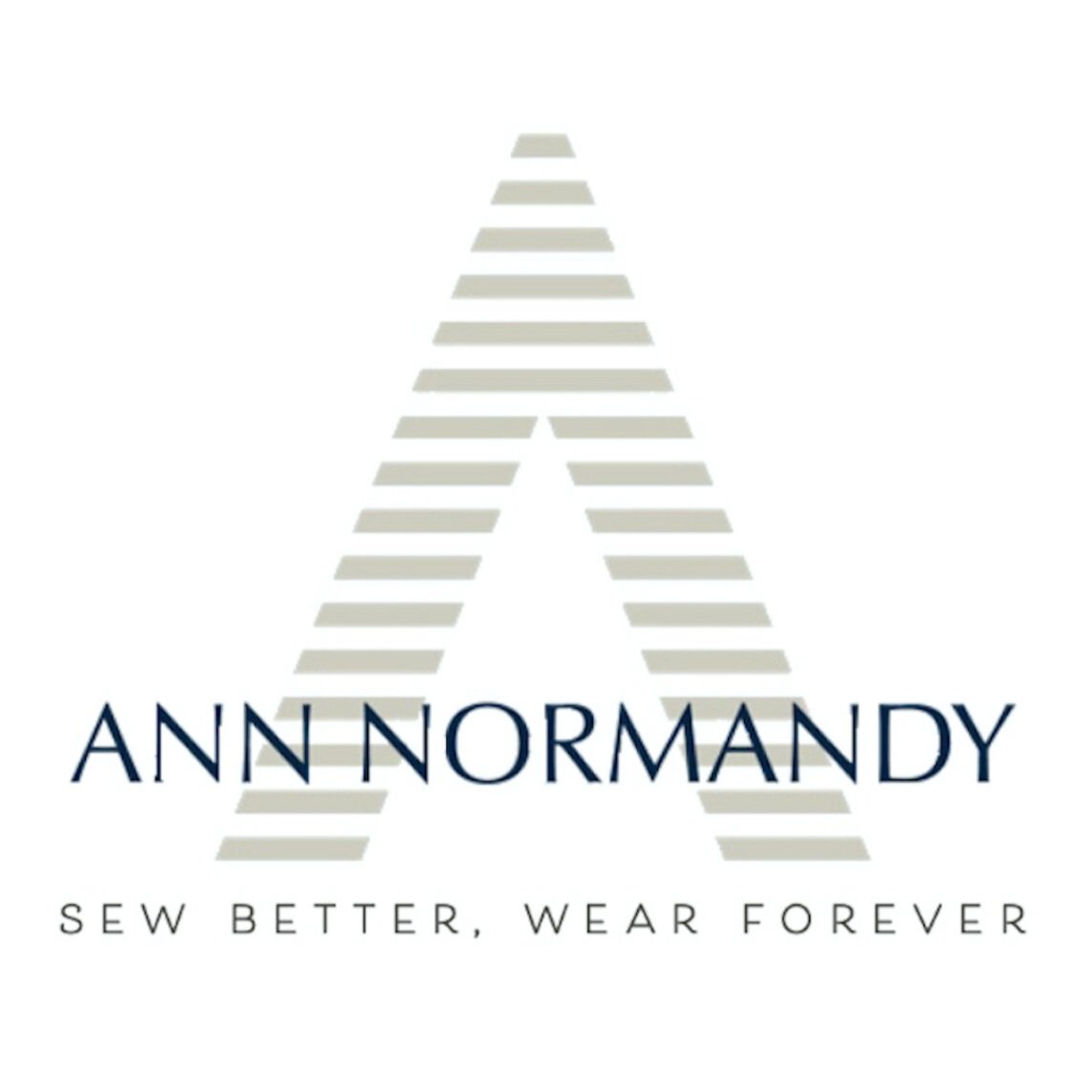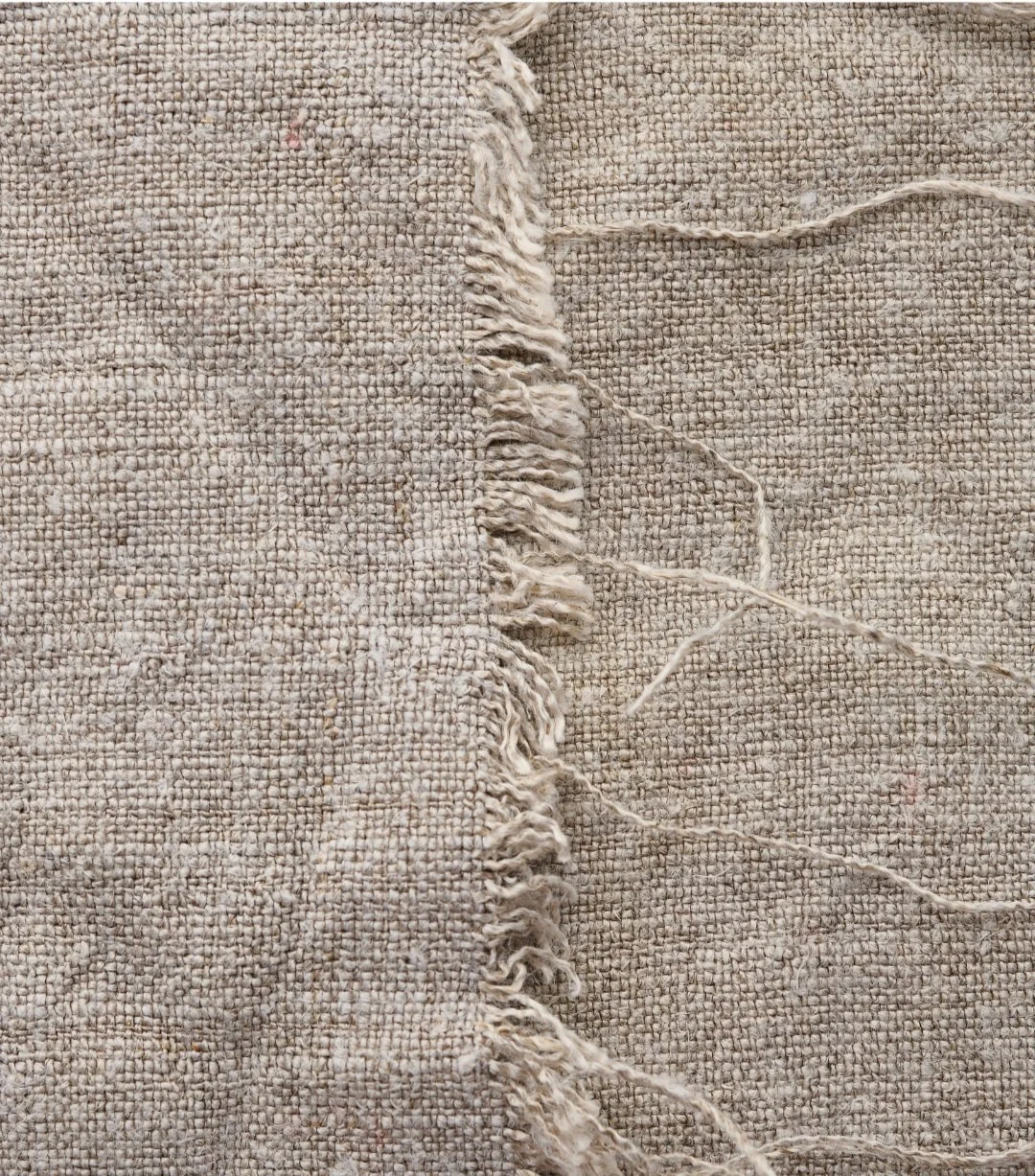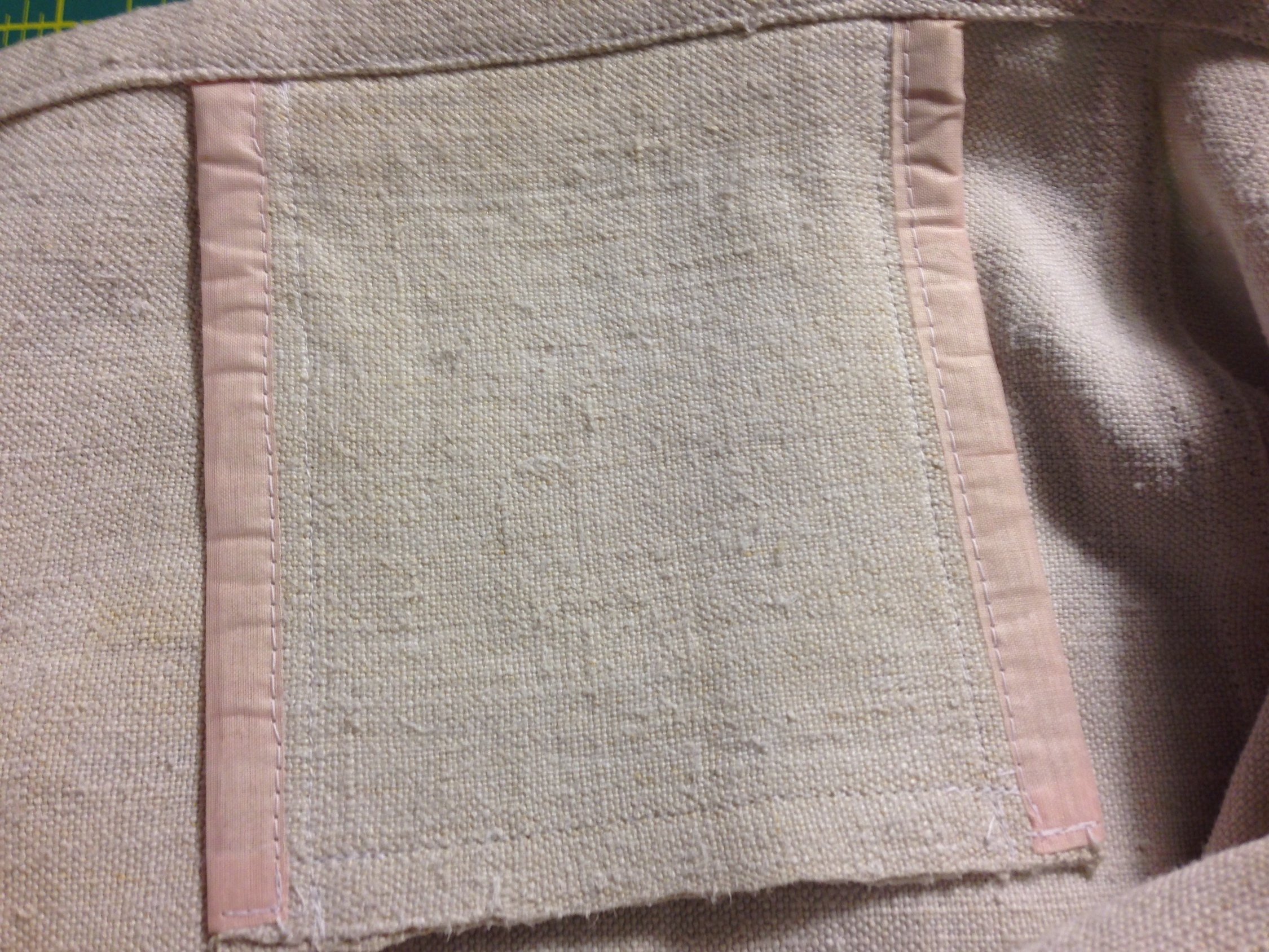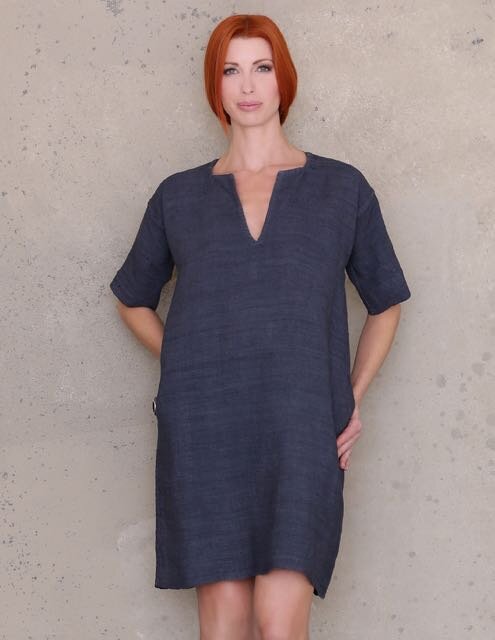Seam Finishes how to Prevent from Fraying
Seam finishes, how to prevent fabric from fraying…
A frayed raw edge of woven fabric can frustrate a sewist, but it can be fixed with the proper techniques. Clean and durable seams are crucial in sewing. Whether you're a beginner or experienced, knowing how to prevent raw edges from unraveling is essential for a boutique-quality garment. This blog post will cover how to prevent fabric from fraying with seam finishes, including the couture techniques used in Ann Normandy Design patterns, to keep those pesky raw edges neat and tidy.
Bindings
Bindings encase the raw edge with a strip of fabric cut on the bias or the grain, depending on the seam and application. This method is excellent for finishing garment seams like necklines and armscyes. Ann Normandy uses bindings around necklines, armscyes, zippers, and pockets.
Ann Normandy Pant Pocket, with binding created with reclaimed pink organza fabric.
Ann Normandy Pant Zipper, with binding created with pink organza fabric.
Flat-Felled Seams
A flat-felled seam is a technique that involves folding and stitching the raw edges encased in the seam itself, resulting in a clean and sturdy finish. This method creates a strong, durable seam in jeans and shirts. All Ann Normandy Design sewing patterns use flat-felled seams, not only for enclosing raw edges but also for providing the structure and stability of the garment.
With flat-felled seams, the garment looks as good on the inside as it does on the outside, ensuring a polished look and enhanced durability for high-quality, long-lasting garments. Click here for our blog post tutorial about flat-felled seams.
Overlocking/Serger
Have a serger? Terrific! An overlocker, or serger, is one of the most efficient ways to prevent raw edges from unraveling. It uses multiple threads to encase the raw edge while cutting away excess fabric as it sews. This method is commonly used for knit fabrics and garments that require a professional finish. Its advantages include speed, a commercial-quality finish, and durability.
Close up of Ann Normandy Shortsleeved Tunic Dress pocket edge serged.
Overcast Stitch
An overcast stitch is an excellent method for preventing raw edges from fraying. It is a stitch on a sewing machine designed to wrap around the edge of the fabric. Its advantages include accessibility, a neat finish, and versatility. To use it, set your sewing machine to an overcast stitch and sew along the raw edge, ensuring the stitch wraps around the edge of the fabric.
Overcast stitch options on a Viking sewing machine.
Zigzag Stitch
A zigzag stitch on most sewing machines is an excellent alternative to a serger or overcast stitch. It can be adjusted in width and length to accommodate different fabrics and edge finishes. This method is accessible, adjustable, and versatile for many sewing projects.
Close up of a zig zag stitch.
When sewing pockets on the Ann Normandy Design Shift Dress, Maxi Dress, and Short-Sleeved Tunic Dress, it is recommended to use serged, overcast, or zigzag stitched edges.
Seam finishes, how to prevent fabric from fraying…
Other options:
Fabric Glue
Fabric glue is an adhesive designed for bonding fabric materials, often used to prevent the fraying of raw edges without sewing. It dries clear, remains flexible, and is washable, making it ideal for lighter-weight fabrics as it maintains flexibility and a seamless appearance. However, it may lead to stiffness and longer drying time on heavier fabrics. Its advantages include ease of use and time-saving application, while its disadvantages are reduced durability and potential stiffness. To use, apply a thin line or dots along the raw edge, let it dry completely, and then proceed with your project.
Fabric Glue Recommendations:
Dritz Fray Check: Easy to apply with a precision tip, dries quickly, and forms a durable bond without making the fabric overly stiff.
Aleene's Fabric Fusion: Known for its strong, flexible bond, non-toxic, and machine washable, making it ideal for delicate fabrics.
Pinking Shears
Pinking shears are scissors with a serrated blade that cuts fabric into a zigzag pattern, preventing raw edges from fraying by creating a non-linear edge. They are not recommended for cutting out pattern pieces, as they might distort seam allowances. The advantages of pinking shears include simplicity, no sewing required, and effectiveness with tightly woven lightweight fabrics. However, they are not recommended for knit fabrics, loosely woven, or heavier-weight fabrics.
Preventing raw edges from unraveling is crucial for achieving a boutique-quality finish in your sewing projects. Techniques such as overlocking, zigzag stitching, pinking shears, bias binding, flat-felled seams, and the overcast stitch ensure your garments and sewing projects stand the test of time. Other applications, such as French seams and Hong Kong seams, are also worth considering when building your wardrobe. Each method has advantages, so choose the one that best suits your fabric and project needs.
Happy sewing!
Kim









